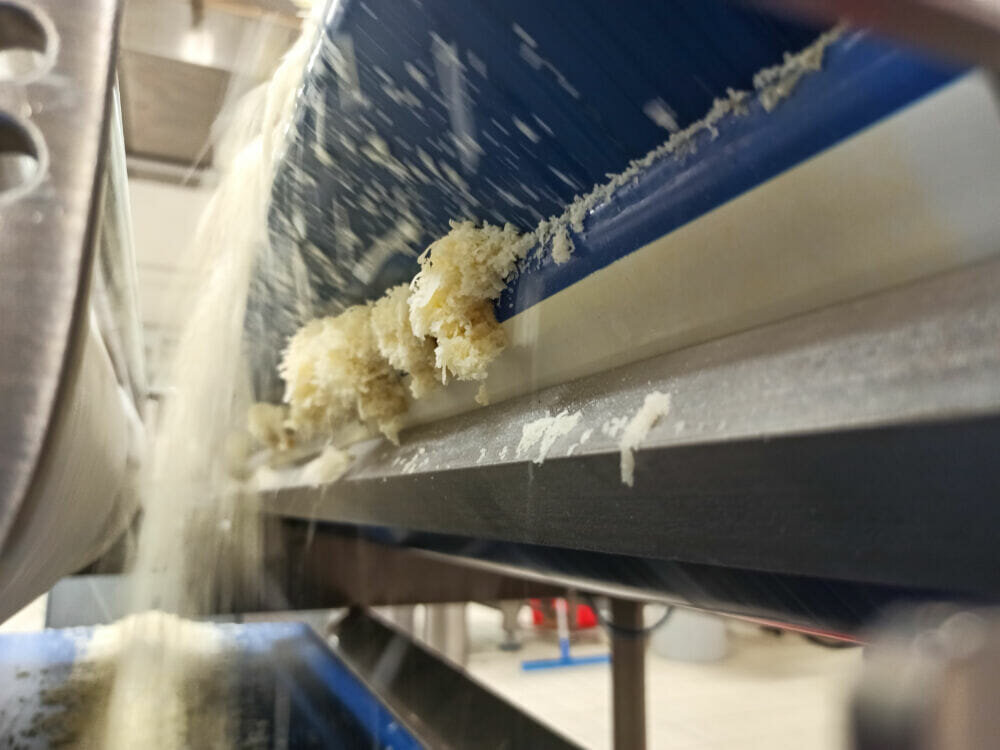~ The choice of conveyor belt can help mitigate time pressures of sanitation ~
When it comes to cleaning in the food industry, time is one of the critical success factors. While plant managers are judged on their throughput speed and productivity, the reputation of the business is on the line in the event of product recalls resulting from cross contamination. Here Ed Elam, Area Business Manager for conveyor and power transmission belt specialist Habasit, explains how choosing the right conveyor belt minimizes the cleaning window.
A plant manager once said to me, “Wouldn’t it be great if we could treat plant sanitation like a dishwasher? You press a button and clean it, knowing exactly how long it will take, the amount of water, detergent and energy it will use, and how much it will cost.”
Cleaning an industrial plant, however, is not as easy as pressing a button, and can be much more disruptive. A typical continuous processing plant, such as a food facility often runs 24 hours a day, with zoned areas taken offline for varying periods of time for cleaning.
Like a carwash, the cleaning cycle in a plant goes through stages. Each zone of the plant is shut down in a phased process, before resuming production once it has been cleaned and swab-tested. The cleaning window ranges from one plant to the next but can be as short as a few hours and as long as a night shift, with sub-industries such as poultry taking the longest.
Plant managers are acutely aware of the risks posed by contamination from the likes of salmonella and listeria, as well as the resulting impact of product recalls on brand reputation. Despite this, there is a competitive pressure on plant managers to maintain, or even further minimize the cleaning window to increase productivity, while increasing the overall hygienic standards.
What can plant managers do to minimize cleaning time while maintaining, and even improving, food safety? One way is to assess your use of conveyor belts, a component that plays a pivotal role in food safety and one that can ultimately save cost and time.
Which belt is best?
The food processing industry uses several types of conveyor belts depending on process and application: fabric belts, monolithic belts, and plastic modular belts. While all these products are food grade, compliant with EU and FDA regulations, and USDA approved, they have their caveats.
Traditional fabric belts are generally not completely resistant to the most aggressive chemicals used in today’s food protein processing industry. This means that in some cases, if not well selected, cared for and maintained, fabric belts can degrade, become difficult to clean and become a host for bacteria.
Monolithic belts are extruded from a single material, typically polyurethane, which prevents degradation and delamination, making them the easiest to clean. However, they are less robust, can stretch under heavy loads if not reinforced, and can sometimes exhibit a lower resistance to harsh cleaning agents.
Plastic modular belts have been used across the food industry for many years, favoured for their reliable performance and ability to operate in difficult environmental conditions. This includes extreme temperatures, impacts, cuts, abrasion and the presence of harsh chemicals that make life very difficult for most other belting types.
In the last 20 years plastic modular belts have had some incremental hygienic innovations in their design, especially in the hinge area which can sometimes be difficult to clean.
Best of both worlds
To overcome the challenges related to cleaning, Habasit has developed a newly designed belt to combine the best features of both monolithic and modular belts. Super HyCLEAN has been designed to minimize the number of hinges and rods along the belt width, moving them to a two-inch section on either side of the belt. It is easier to track, doesn’t suffer from elongation, and is robust and easy to clean.
The bottom of the belt results in a mostly flat surface that’s easy to clean when the two small lateral hinges and the connection bar have been further developed to easily flush any accumulated organic debris. This new product combines the traditional reliability and robustness of a modular belt with the superior sanitation performance of a monolithic belt.
Independent third-party sanitation tests of Super HyCLEAN, which simulated real-life cleaning of protein processing lines, demonstrated a 50 per cent saving of time and rinsing water volume compared with other popular hygienic plastic modular belts. Further UV-tracer testing revealed that Super HyCLEAN retains between 2.2 and 4.1 times less residual soil, making the belt much more efficient to clean than was previously possible. Finally, microbial residue swab tests showed 20 times less bacteria colonies forming from the Super HyCLEAN samples compared to those taken from the other hygienic plastic modular belts tested.
It’s clear that, while cleaning and sanitation are both important and necessary activities for a food processor, the choice of a proper, hygienic conveyor belt plays a critical role in minimizing the cleaning window; improving speed, cleaning and business reputation.





